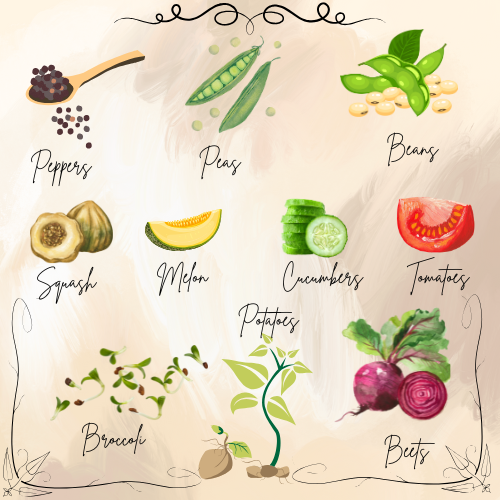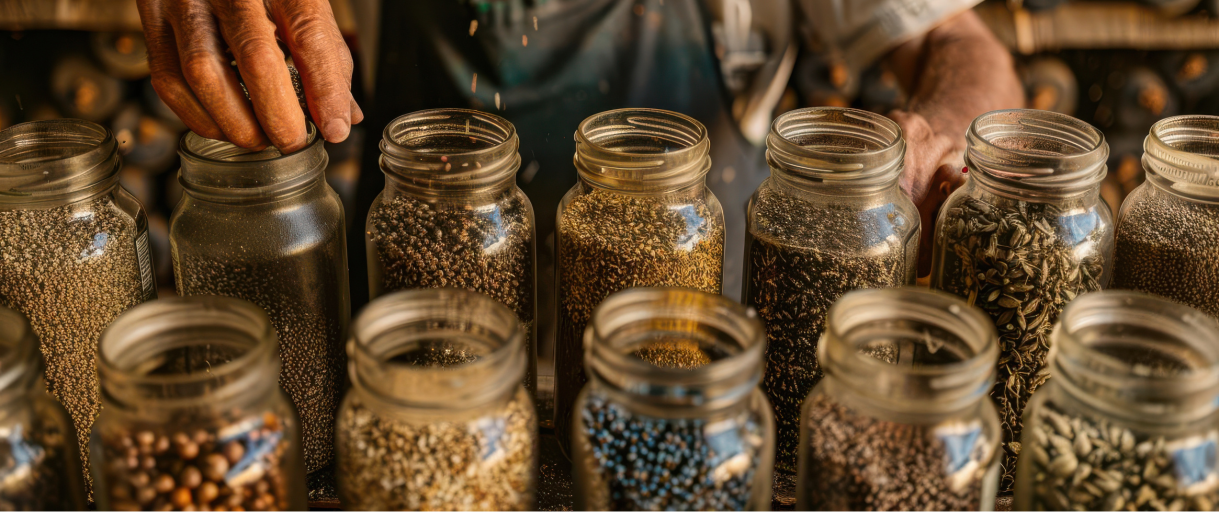Why should you harvest seeds? Harvesting seeds can be tricky, requiring patience, practice and a good amount of knowledge. That being said, it’s an incredibly rewarding endeavor.
Properly harvesting seeds can ultimately result in cultivating a sustainable food source year-round.
Growing and maintaining a flourishing garden is an essential component of any prepper’s life. Planting, nurturing, growing and harvesting fruits and vegetables is not only a great way to live sustainably and independently, but it’s also economically sound.
On average, American families spend over $13,000 annually on food per household. That figure is a large percentage of the average family’s budget, and with inflation, economic instability, and other factors, the cost is continuing to rise.
For many, it is a struggle to put fresh fruits and vegetables on the table. Healthy eating should not be a luxury, and yet, it is indeed cost-prohibitive.
Additionally, many Americans are becoming increasingly unhappy with the quality of store-bought produce. With growth hormone and other controversial additives, the safety of foods grown on large farms has come into question.
Organic foods are markedly more expensive than non-organic options, and they are not available in many rural locations. Adding even more aggravation to the mix is the fact that many foods labeled as “organic” or “all-natural” are misrepresented by food retailers as a strategic marketing measure.
Shoppers pay a hefty price for fresh food that fails to live up to the standards that we expect from natural, organic, sustainably-grown food. Something’s got to give.
How to Collect and Save Seeds
What follows is a step-by-step overview of the proper process to follow to successfully harvest seeds.
- Gather the requisite gardening tools. This includes a shovel, pruning shears, scissors, containers, envelopes, and a pen for labeling and making notes.
- Allow the plant to fully mature before attempting to harvest the seeds.
- Remove the seeds, seed pods, capsules or bulbs and place them into an envelope or container.
- Separate the seeds from any surrounding pods or plant matter.
- Store the seeds in paper envelopes or bags to reduce the accumulation of moisture and humidity.
- Place your seed collection in a cool, dark, dry, ventilated space.
- Plant the seeds in accordance with your planting calendar.
Sustainable Food: What Seeds to Grow
Understandably, before you can harvest seeds, you must have a thriving garden. Plant a variety of hearty fruits and vegetables, in addition to herbs, edible flowers and anything else that can add flavor and nutrition to your diet.
In terms of the seeds you should focus on harvesting, the best fruits and vegetables include:

- Peppers
- Peas
- Beans
- Squash
- Melon
- Cucumbers
- Broccoli
- Beets
- Potatoes (yes, potatoes do seed)
- Tomatoes
It is extremely helpful to understand the basics of the biology of pollination, seeding and the life cycle of a plant. This will help you to correctly gather seeds at the ideal time, and plant the seeds at the optimal time of the year.
Noting when you plant your crops and when you gathered the seeds will help you to stay organized and have a flourishing supply of produce regardless of the season.
If you are new to gardening, be aware that there are self-pollinating crops that are considered easy to grow. Tomatoes, beans, lettuce, and peas are great for beginners to learn how to harvest seeds properly.
It is also useful to understand the difference between hybrid species and those that spread through open pollination.
The process of harvesting seeds is relatively simple; gathering, cleaning, drying, storing and planting. There are some helpful techniques to follow. Seed harvesting time varies based on the fruit or vegetable at hand.
There are helpful guides to assist you with pinpointing when, exactly, you want to gather and dry the seeds, so that you’re not harvesting them at the incorrect point in the cycle.
Remember to use your planting calendar and plan your gardening regimen accordingly. Some fruits and vegetables produce seeds biennially, while others are annual or perennial.
Be selective about the seeds that you choose to preserve; not every crop is going to be a good one.
Year-Round Harvest, Regardless of Climate
Even if you don’t live in the most temperate of climates, you can have success growing foods year-round. Of course, growing crops in colder areas can be difficult, but not impossible.
Some shoveling may be required, but you will be amazed at the number and variety of cold-hardy crops you can successfully grow. In addition to sowing seeds, you can give your garden a huge boost by planting a good amount of root vegetables.
This will add sustenance, variety, flavor, and nutrition to your annual harvest.
In colder climates, remember that biennials require two full growing seasons before seeds are produced. Conversely, in warmer areas, biennials planted in the fall will produce seeds during the next spring.
Carrots, beets, and cabbage are a few examples. Adding to the complexity of the situation is the fact that plants grow at different rates. Don’t let this fact discourage you.
Simple note-taking will help you to stay on top of your plant-growing schedule so that you are always on top of the situation and you know what’s going to pop up, and when.
In order to protect your supply of seeds, proper storage is critical. Make sure that you keep the seeds in a dry, well-ventilated area. A dry, cool, and dark space is ideal. Otherwise, if the seeds are improperly stored, they may become unusable.
Exposure to humidity and moisture, for example, can allow mildew to grow on your seeds, completely contaminating them. A steady supply of healthy seeds is critical to having a healthy, sustainable garden.
Produce is extremely expensive. Many American families struggle to afford healthy, fresh, nutrient-rich foods due to ever-increasing costs and lack of availability.
Produce that comes from commercial farms is also problematic, with foods being treated with growth supplements and other controversial additives.
The organic food market is not a solution to the problems posed by the produce available at supermarkets. Rather, organic produce is expensive, has limited availability, and is often misrepresented.
More and more Americans are becoming self-reliant and taking back control of their food sourcing. Growing a large fruit and vegetable garden gives you the ability to have a constant supply of fresh, nutrient-rich, pesticide-free produce all year long.
This is accomplished by harvesting seeds from your successful crops, storing them properly, and planting them strategically. This process involves using a calendar, taking notes, and having a basic understanding of plant biology.
Your garden will take some time and effort to initially plant and establish, but it will grow stronger with each season. You and your family will be able to eat fresh fruits and vegetables, make jams and jellies, and can foods that will last for years.
You may also like:








